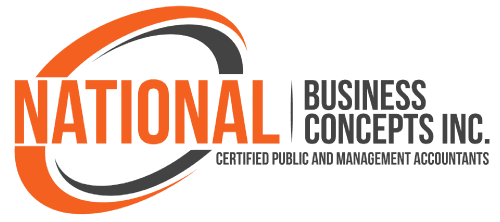To be able to effectively manage an employee benefits program it is first necessary to grasp its purpose. So, to that end, such programs are structured offerings that support employees’ health, financial security, work-life balance, and professional growth—beyond base salary. They typically include health insurance, retirement plans, paid leave, wellness resources, and perks like flexible work or education support. These programs enhance job satisfaction, retention, and employer brand while aligning with legal and organizational goals. Effective programs are tailored to workforce needs, communicated clearly, and regularly evaluated to ensure relevance and equity. It provides derivative benefits such as reductions in salaries and tax bills.
Best Practices For Managing Employee Benefits Programs
Strategy
Effectively managing employee benefits programs calls for strategic planning, thoughtful design, and operational excellence. The foundation starts with defining a Total Rewards Strategy that aligns benefits with company values and market position, whether aiming for top-tier offerings or matching market medians. A Total Rewards Strategy is a holistic framework that integrates compensation, benefits, well-being, recognition, and development to attract, retain, and engage employees. Instead of focusing solely on salary, it delivers value through diverse channels—like flexible work, career growth opportunities, and wellness support—aligned with the company’s goals and employee needs. The strategy is data-driven, personalized, and built to foster equity and inclusion across workforce segments. It also evolves with feedback and market trends, ensuring continuous relevance. Regular benchmarking against industry standards ensures competitiveness, while segmenting employee needs by demographics and roles allows for more tailored solutions. When executed well, it shapes a compelling employee experience and drives organizational performance.
Operations
Operationally, automating administration with Human Resource Information System (HRIS) or benefits platforms streamlines the processes of enrolment, eligibility, and claims. HRIS is a comprehensive digital tool that centralizes employee information and automates key HR processes. Its major advantage is its ability to transform benefits management. The system centralizes all benefits-related data, simplifies open enrolment through automation, and provides employees with easy access to plan details and enrolment options. It also streamlines compliance reporting, ensuring organizations meet regulatory requirements with reduced manual effort. Payroll integration and real-time analytics further enhance efficiency, minimize errors, and enable smarter decision-making. Overall, HRIS systems save time, improve accuracy, and boost both HR productivity and employee satisfaction as organizations grow.
Compliance
Staying compliant with relevant laws such as the Affordable Care Act (ACA,) the Family and Medical Leave Act (FMLA,) the Consolidated Omnibus Budget Reconciliation Act (COBRA,) and the Employee Retirement Income Security Act (ERISA) is essential to mitigate risks associated with employee benefits programs. The Affordable Care Act (ACA) requires large employers to offer health insurance that meets certain standards, such as essential health benefits and coverage for young adults up to age 26. It prevents insurers from denying coverage due to preexisting conditions and encourages wellness programs with incentives. The Family and Medical Leave Act (FMLA) provides eligible employees with up to 12 weeks of unpaid, job-protected leave for specific family and health reasons. During this leave, employers must maintain group health benefits, ensuring workers’ coverage isn’t interrupted. COBRA lets employees continue their group health insurance after qualifying events like job loss or reduced hours, usually for up to 18–36 months. However, the employee must pay the full premium plus a small administrative fee. ERISA regulates private-sector benefit plans, including retirement, health, disability, and life insurance. It establishes fiduciary duties for plan administrators, mandates transparent reporting and participant disclosures, and requires fair claims and appeals procedures.
Audits and Communications
Conducting pay equity audits helps identify and resolve any disparities, thus promoting fairness across the workforce. Communication is equally critical as transparent language, clear FAQs, and regular updates foster trust, while benefits education—through training and resources—empowers employees to make informed decisions. Actively soliciting feedback via surveys and focus groups ensures offerings remain relevant and effective.
Human Centric Design
Designing benefits with a human-centric approach means supporting the whole person, including mental health, financial wellness, and flexible work options, and offering personalization such as cafeteria-style plans and flexible spending accounts. Inclusivity should be a priority, ensuring benefits meet diverse cultural and personal needs. Finally, continuous improvement is vital: tracking benefit utilization helps identify which programs are most valued, while staying attuned to market shifts and engaging stakeholders at all levels ensures the program evolves in step with organizational and employee needs.
Metrics
To effectively assess employee benefits programs, organisations should combine quantitative metrics—such as ROI, healthcare cost reduction, turnover rate, and offer acceptance rate—with qualitative measures like satisfaction scores and well-being surveys. Tracking usage rates, engagement (including platform logins), and productivity indicators (absenteeism, presenteeism, and career development) provides a comprehensive view of a program’s impact. Benchmark comparisons, cost per employee, and benefit spend distribution ensure strategic alignment and industry competitiveness. Together, these metrics capture financial effectiveness as well as the program’s influence on retention, recruitment, engagement, and employee well-being.
Conclusions
Employee benefit programs support health, financial security, and work-life balance. Effective management requires a Total Rewards Strategy aligned with company values, automated HR platforms for administration, and ongoing compliance with laws like ACA and FMLA. Regular pay equity audits, clear communication, and employee education promote fairness and informed decisions. Human-centric and inclusive benefit designs—like flexible plans and wellness support—enhance employee satisfaction. Program success is evaluated using both quantitative metrics and qualitative feedback to ensure benefits meet organizational and workforce needs.
By Richard Thomas


